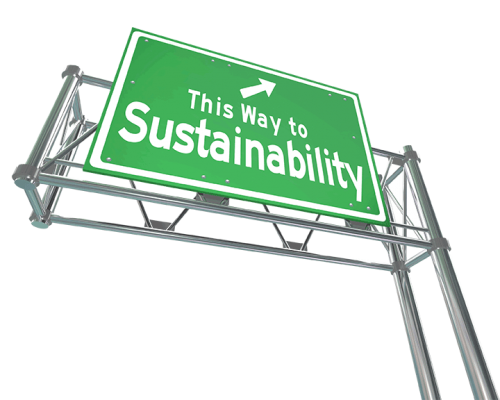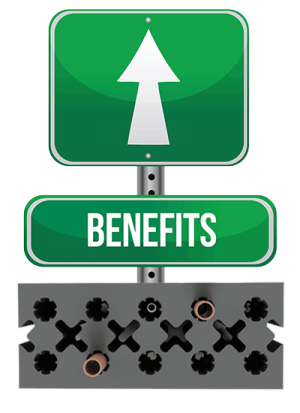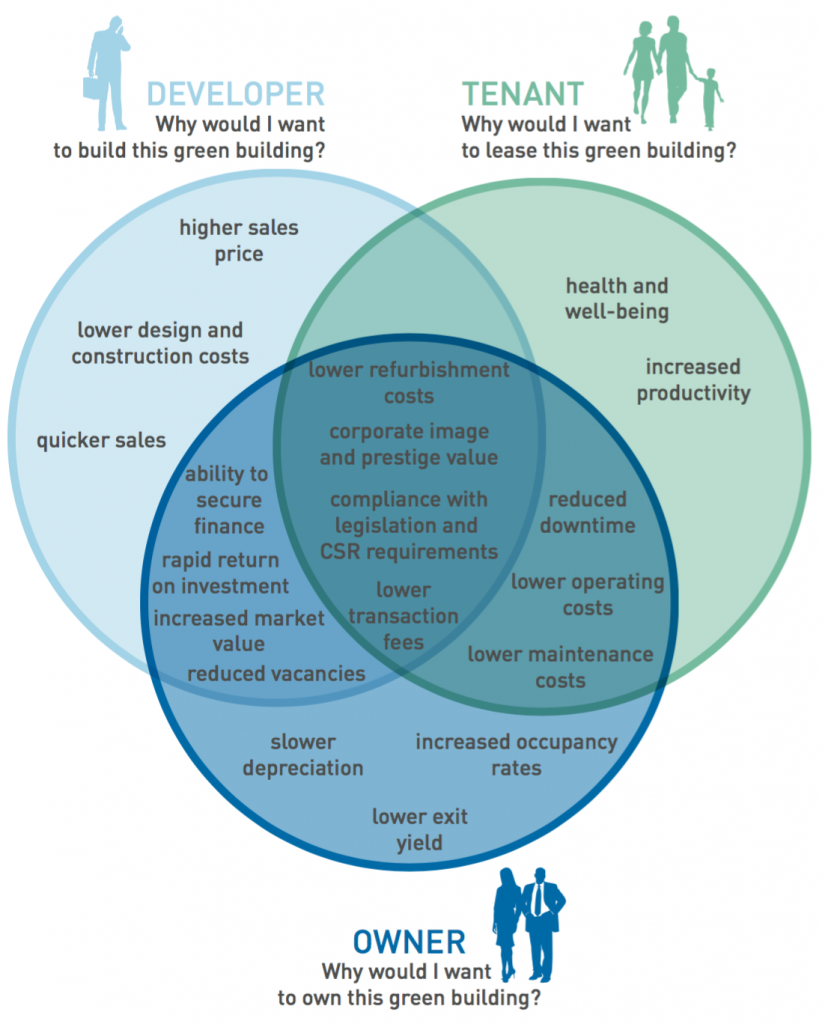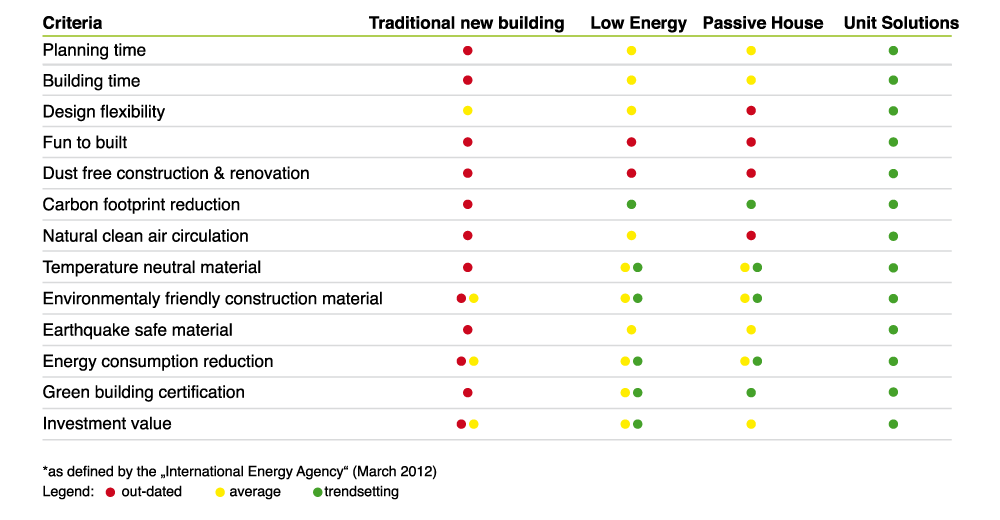While our new technology constantly being optimized and developed to complement current practices in creating greener structures, the benefits of green buildings range from reducing the use of energy, environmental, economic to social and to health and must serve our community. By adopting greener practices, we can take maximum advantage of environmental and economic performance. Green construction methods when integrated while design and construction provide most significant benefits. Green building benefits include:
Our green building benefits
- Up to 86% of energy consumption reduction
- Carbon footprint reduction
- Easy way to generate ROI
- Fun to be part of this green movement
Easy way to generate a ROI (Return Of Invest)
Sample calculation tiny home:
Investment for System 4 Tiny Home $ 50,000
$ 500 Energy/month = 1,000 sq.f. tiny home
$ 500 x 12 month = $ 6,000
-86% energy savings = $ 5,160
x 10 years of energy savings = $ 51,600
Investment $ 50,000 USD
Savings $ 51,600 USD
- Reduce waste on construction
- Conserve natural resources
- Improve air quality
- Protect our ecosystems
- Enhance and protect biodiversity
- Reduce operating cost
- Lowering a building’s overall life cycle cost
- Innovative green product and service
- Expand and shape markets for green products
- Enhance asset value and profits
- Improve occupant productivity
- Optimize life cycle economic performance
- Qualifying for various tax rebates, zoning allowances and other incentives in many cities
- Improve employee productivity and satisfactions
- Become a selling point to potential buyers
- Increase the market for an engineer’s or contractor’s skills
- Improve quality of life
- Minimize strain on local infrastructure
- Improve occupant health and comfort
- Improve air, thermal, and acoustic environments
- Enhance occupant comfort and health
- Possibly limiting growth of mold and other airborne contaminants that can affect worker productivity and/or health

System 4 - building & system benefits

Approx. 8 lbs. / 4 kg to stack the Master Unit.
The innovative Master Unit is designed not being influenced by any environment.
The Master Unit‘s are temperature stable from minus -40 Fahrenheit / Celsius to plus +122 Fahrenheit / + 50 Celsius.

The Master Unit‘s are designed to swallow noise and echo.
Among other building materials and systems, the Master Unit absorbs
only 1.10% water.
Using our resources responsively, makes life worth living.
Safe, healthy construction solution with No VOC that can be built up in no time.
YOU ARE THE ONE WHO KNOWS THE RIGHT DIRECTION

Image Source: The business case for green building – World Green Building Council, 2013
Case Studies
„Research on climate change suggests that small improvements in the sustainability of the existing building stock can have large effects on energy efficiency in the economy“.
The economics of green buildings – UNIVERSITY OF CALIFORNIA, BERKELEY
„Upfront cost increases in green buildings are often offset by a decrease in long-term life cycle costs, particularly in the case of green buildings that feature high-performance façades and energy-efficient building systems.“
The business case for green building – WORLD GREEN BUILDING COUNCIL
„Fifty-one percent of the architects, engineers, contractors, owners and consultants participating in the study anticipate that more than 60% of their work will be green by 2015, up from 28% of firms in 2012. And the growth of green is not limited to one geographic region or economic state—it is spreading throughout the global construction marketplace.“
World green building trends – UNITED TECHNOLOGIES IN ASSOSOCIATION WITH U.S. GREEN BUILDING COUNCIL AND WORLD GREEN BUILDING COUNCIL
“The Value of Green Labels in the California Housing Market” is the first study to provide statistical evidence that, holding other factors constant, a green label on a single-family home in California provides a market premium compared to a comparable home without the label.“
The value of green labels in the California housing market – NILS KOK Masstrichts University, Netherlands / University of California, Berkeley, CA and MATTHEW E. KAHN University of California, Los Angeles, CA
Energy Indicator - Worldwide 2015 International Energy Agency (IEA)
- Heating 43 %
- Warm Water 15 %
- Air Conditioning 10 %
- Lighting 7 %
- Freezer Refrigeration 8 %
- Cooking 6 %
- Communication, TV, Audio, PC 3 %
- Washing, Drying 6 %
- Rest 2 %
536 % Manufacturing Efficiency
- Our manufacturing processes and construction life cycle are designed to reduce operation energy consumption, that is 536 % more efficient than traditional construction processes.
- Our manufacturing processes and construction life cycle are designed to reduce operation energy consumption, that is 536 % more efficient than traditional construction processes.
Energy Indicator with System 4 - The new generation of buildings
- Heating Savings 35 %
- Heating 8 %
- Warm Water Savings 10 %
- Warm Water 5 %
- Air Conditioning Savings 7 %
- Air Conditioning 3 %
- Rest, Washing, Drying, Communication, TV, Audio, PC, Cooking, Freezer, Refrigeration, Lighting 32 %
86 % savings of total amount see above
Typical Building Type Comparison

